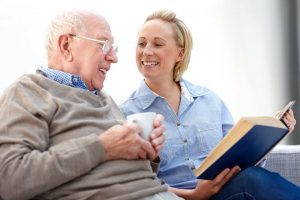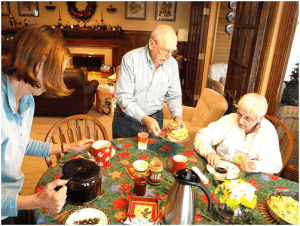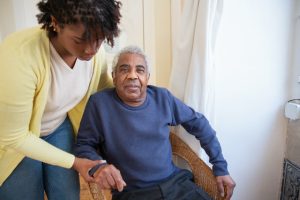7 Craft Projects to Bring You Joy
Getting into crafts is a great way to focus your mind and do something that brings you joy. There are so many different crafts that you can do, and even if you are on a budget, you will have no trouble finding a craft that brings you happiness.
1. Soap Making
Soap making is an up-and-coming craft that allows people to create their own handmade soap. There are many different designs, shapes, and more that you can get into with soap making. You can make soap from scratch, or you can get a kit that will give you all the ingredients to make your first batch of soap yourself. As you get more experienced, you can even sell your soap and learn how to create other bath and beauty products.
2. Wood Working
Woodworking has been a popular hobby for centuries. You can create so much wood. From furniture to statues, to even cutlery, you are sure to find something that you can make and enjoy. It is important that when you do this craft, you have all the proper tools for the job like a scroll saw. This will help to ensure that you can create amazing wood pieces that you can sell or just use for yourself. If you are unsure where to begin with woodworking, you should purchase a book on the craft and study it. You may also want to check with your local community college. Some colleges hold woodworking classes to teach about this great craft.
3. Plastic Canvas
Plastic canvas crafts are awesome crafts that you make with yarn and canvas. Many books can teach you how to make different things like tissue holders, magnets, and more. You can also watch various videos online for inspiration.
4. Resin Making
Resin making is gaining in popularity and is a super fun craft. With resin, you mix up the components, and then you mold them. You are not just limited to jewelry. With resin making, you can make mats, cups, picture frames, phone cases, and more. If you are new to resin making, you can watch videos that show you the entire step-by-step process.
5. Candle Making
Candle making is another fun craft that can bring you joy. You can find candle-making kits that will take you through the step-by-step process, or you can purchase molds and start the process yourself. You can also purchase many books and watch videos online about how to get started with candle-making. An up-and-coming craft with candle making that is gaining in popularity is carved candles. Carving unique designs in candles can be very satisfying and bring you joy.
6. Crocheting
Crocheting is an easy craft that uses yarn and needles to create beautiful pieces of work. When you think about crocheting, you will probably be thinking about just blankets. While it is true you can make beautiful blankets with crocheting, you can also create a wide variety of other things as well. For example, many people have branched into making stuffed animals with crocheting. This art, known as amigurumi, can help you to create unique animals for loved ones and to sell. If you are new to crocheting, consider getting books, and watching videos online.
7. Sewing
The possibilities are endless when you get into sewing. You can learn to make blankets, or you can even learn to make quilts. Another option is to learn how to sew your own clothes or baby doll clothes. If you are new to sewing, you will first want to learn how to hand stitch, and then you can move on to learning how to use a sewing machine. If you are curious as to what crafts you might make, you can look online for inspiration or go to your local craft store to find inspiration.
Crafting is therapeutic for many people and can bring you peace and joy. Many doctors and therapists now recommend that people should get into a craft to help ease anxiety and depression. If you want to have more joy in your life, consider getting into one or more of these crafts. You will be amazed at how having a craft to do focuses your brain and helps you throughout your day.
Guest Blog: Financial Management For Seniors: Prepping for a New Stage of Life

Approaching the discussion of financial management with the seniors in your life can be a sensitive topic. If you’re hoping to help an elderly family member or friend get a better handle on their monetary commitments, there are several important items to consider. Whether you’re helping a senior straighten out their finances as they transition into assisted living, or you’re simply noticing the elders in your life need to do some fiscal housekeeping, you should always have a plan of action in place.
Organize
With age, staying on top of payments can be made even more difficult if the senior(s) in your family tend to be more disorganized. From putting a filing system in place to creating an excel spreadsheet, organization is key when it comes to helping seniors manage their finances. If you’re planning on assisting the elders in your life with their finances, start small by offering to help your loved one give their financial system some structure. Dedicate a time to go through financial documents and bills together, and once you’ve tackled the paperwork, discuss budgeting as well. If an assisted-living arrangement is being considered for the future, it’s important to be financially prepared for this kind of transition.
Discuss Timing
Timing is perhaps the most sensitive aspect of financial planning with seniors. Explain to your loved ones why they should be prepared for the unexpected, and take the time to discuss their future living situation along with what lies ahead for their expenses. While most seniors have savings set aside for significant transitions, it’s never a bad idea to reevaluate these funds. It might be beneficial to set up a more long term money management plan, and to start assessing areas in which the seniors in your life can save more. Look closely at monthly expenses, and track how much they might need to save over the next few years in order to transition into assisted living, or even to hire a long-term care professional. Now could be a good time to consider helping them refinance their mortgage if they are hoping to put some extra money away in order to prep for unexpected new stages of life.
Automate Payments
Though it’s no secret that most seniors are not the most technically savvy, moving towards automated payments might actually be a better option long term. If you’re finding that an elderly family member or friend appears to have multiple overdue or missed payments, or that they’re overpaying for fear of missing a payment, suggest helping them set up auto-pay. Having their bills paid electronically is one less thing for the them to worry about, and one less thing on their list to have to remember each month. Setting up automatic payments will no doubt help your loved one feel even more prepared for any transitions that might lie ahead.
Diverticulosis and Diverticulitis Treatment
Background
Diverticulosis results from pouches that form in the wall of the colon (or large intestine). Diverticulitis is an inflammation or infection of these pouches. Diverticular disease is more common among older adults than younger people (Tursi, 2007). Sixty-five percent of older adults will develop diverticulosis by age 85 (Kennedy-Malone et al. 2004). The exact cause of diverticulosis is not known, but it is speculated that a diet low in fiber and high in refined foods causes the stool bulk to decrease, leading to increased colon transit time. Retention of undigested foods and bacteria results in a hard mass that can disrupt blood flow and lead to infection. The earlier the diagnosis and treatment, the better the outcomes will be; however, if complications such as bleeding increases the risk of less- than- optimal outcomes.
Warning Signs
Risk factors for diverticulosis include obesity, chronic constipation, and straining, irregular and uncoordinated bowel contractions, and weakness of bowel muscle due to aging. Other risk factors are directly related to the suspected cause of the condition. These include older than 40 years old of age, low-fiber diet, and the number of diverticula in the colon (Thomas, 2011). Diverticulosis may result in pain in the left lower quadrant (LLQ), can get worse after eating, and may improve after a bowel movement. Warning signs of diverticulitis include fever, increased white blood cell count, bleeding that is not associated with pain, increased heart rate, nausea, and vomiting.
Diagnosis
Evaluation of the abdomen may reveal tenderness in the LLQ and there may be rebound tenderness with involuntary guarding and rigidity. Bowel sounds may be initially hypoactive and can be hyperactive if the obstruction has passed. Stool may be positive for blood. The initial evaluation is abdominal Xx-ray films, followed by a barium enema, though a CT scan with oral contrast is more accurate in diagnosing this condition (Thomas, 2011). A complete blood count may be done to assess for infection.
Treatments
Diverticulosis is managed with a high-fiber diet or daily fiber supplementation with psyllium. Diverticulitis is treated with antibiotics, but in acute illness the person may require hospitalization for IV hydration, analgesics, bowel rest, and possible NG tube placement. Morphine sulfate should be avoided because it increases the intraluminal pressures within the colon, causing the symptoms to get worse (Thomas, 2011). Patients should learn about a proper diet, avoidance of constipation and straining during bowel movements, and when to seek medical care. The diet should include fresh fruits, vegetables, whole grains, and increased fluid intake, unless contraindicated. In extreme cases, either where the person has complications that do not resolve with medical management or has many repeated episodes, a colon resection may be needed. Patients will need to work closely with their primary care provider to manage any ongoing problems.
Adapted from Mauk, K. L., Hanson, P., & Hain, D. (2014). Review of the management of common illnesses, diseases, or health conditions. In K. L. Mauk’s (Ed.) Gerontological Nursing: Competencies for Care. Burlington, MA: Jones and Bartlett Publishers. Used with permission.
digestive.niddk.nih.gov/ddiseases/pubs/diverticulosis/
Guest Blog: Physical and Mental Health Aspects of Social Care For Elderly
There are many social forms of care for seniors that provide them with assistance and companionship on a daily basis. This type of care is incredibly useful for seniors who struggle with chronic physical or mental health problems, or just seniors who are struggling to transition into retirement. There are also many memory care facilities available that provide similar services, but also offer additional services for seniors struggling with dementia or other memory issues. Before transitioning into this type of senior care, here are some of the physical and mental results of social care for seniors that you should be aware of.
Improved Moods
One of the biggest benefits of a social care structure for seniors is that it helps them keep their moods and emotions stable. Many people transitioning into senior living struggle with feeling lonely, which can in turn lead to depression and anxiety. However, having caregivers and other seniors around as social support can do wonders for improving seniors’ moods and helping them feel emotionally supported. Transitioning into retirement can be overwhelming, but having a good social support system around can mitigate these negative feelings. Social interaction is naturally stimulating and releases calming chemicals in the brain that reduce stress.
Physical Pain Management
It’s normal for seniors to experience some type of chronic pain as they get older, particularly for people who have struggled with injuries earlier in life. It can be very difficult for seniors to manage pain on their own as they get further into their later years. Having caregivers available to help with activities that cause residents pain is one of the biggest benefits of assisted living care for seniors. In many cases, caregivers can also help seniors with medication administration and gentle exercises that can prevent chronic pain from worsening.
Memory Care
Unfortunately, many seniors struggle with dementia in old age, and this is a very difficult condition to deal with by yourself. A social assisted living facility that offers memory care can make life easier to navigate for seniors who struggle with these conditions. Memory care manages the situations seniors experience on a daily basis to help them access the memory they do have, while making tasks easier to do and preventing accidents and night wandering. If you are wondering where to find memory care facilities near you, consult your local doctor, or check one of the many online guides available that list local senior care facilities.
Daily Routine and Structure
Many seniors in retirement struggle with maintaining a daily routine, which can lead to both physical and mental health problems. One of the best things about assisted living is that it helps seniors maintain an enjoyable routine from day to day. Having this kind of structure keeps seniors active and provides mental stimulation as well. While seniors still have the flexibility to enjoy their favorite hobbies and activities, as well as spending time with friends and family, living in an assisted care facility ensures they will have something to do every day.
There are many great benefits of a social care structure for elderly patients. As frustrating as it can be for seniors to lose their independence, having daily care ensures that they are living the healthiest, most comfortable life possible. It also provides their loved ones with the peace of mind they need, so they won’t have to worry about the health and safety of their relatives. There are many different types of social care for seniors, so you will be sure to find an option that works for your needs.
Guest Blog: Caring for a Parent with Dementia at Home
Dementia is a progressive illness that causes a decline in mental abilities. Symptoms can include memory loss, confusion, difficulty speaking or understanding, and changes in mood or behavior.
One of the most important things to remember is that your parents are still the same person they have always been, even if their condition is changing. Be sure to talk with them, spend time with them, and continue to involve them in activities they enjoy.
Caring for a parent with dementia can be difficult. With proper planning and support, it is possible to provide them with the care they need. By following these tips, you can make life easier for both of you.
Tips to Help my Elderly Parent with Dementia
There are many things you can do to make caring for a parent with dementia at home easier. Here are some tips:
- Make a daily routine and stick to it as much as possible. It will help your parents feel more secure and avoid feeling overwhelmed.
- Another thing you can do to keep your parents safe is to ensure that their living environment is as safe as possible. Remove or keep any tripping hazard out of reach like cords and wires, and install safety rails in the bathroom.
- Create a comfortable, safe environment where your parents can relax and feel at ease. Remove loose carpets or rugs that could cause falls.
- Ensure that your parents are eating healthy foods and drinking enough fluids. Proper nutrition is essential for keeping your parents healthy.
- Encourage your parents to get regular exercise, even if it is just a short walk around the block. Exercise can help improve mood and cognitive function.
- Make sure your parents get plenty of sleep. Quality sleep is essential for overall health and well-being.
- Regularly communicate with your parent’s doctor to ensure they have the best possible care.
Helpful Tools for Caring After Demented Parents
If you find it difficult to care for your parents on your own, many helpful resources are available. Local support groups can offer advice and emotional support, and home health care providers can provide additional assistance with tasks such as bathing, grooming, and medication management.
One of the most common symptoms of dementia is wandering. This can be dangerous for your parents and others, so it’s important to take steps to prevent them from wandering. One way to do this is to keep a close eye on them and ensure that they are always in a safe place. If they do wander off, make sure to have a plan in place to find them quickly. MedicAlert bracelets or ID tags can help emergency personnel identify your parents quickly if they are found wandering.
One important resource to consider is MedicAlert Safe Return, a program that provides identification and emergency notification services for people with dementia or other cognitive conditions. If your parent wanders away from home, caregivers can use the 24/7 hotline to locate them quickly and ensure they receive the necessary medical attention.
How to Cope with a Parent with Dementia
The experience of caring for a parent with dementia can be difficult and emotionally taxing. If you feel overwhelmed, don’t be afraid to ask for help from friends or family members. There is no shame in admitting that you need help. Here are some tips for coping:
Seek out support from friends and family members. Talking about your experiences can help you feel more understood and supported.
Join a support group or online forum specifically for caregivers of people with dementia. This can be a great way to connect with others who understand what you are going through.
Look into respite care, which can provide temporary relief from caregiving duties. This can allow you to take a break and recharge while knowing that your parents are in good hands.
Talk to a therapist or counselor about the emotions you are experiencing. This can help you deal with the stress and sadness of this situation.




